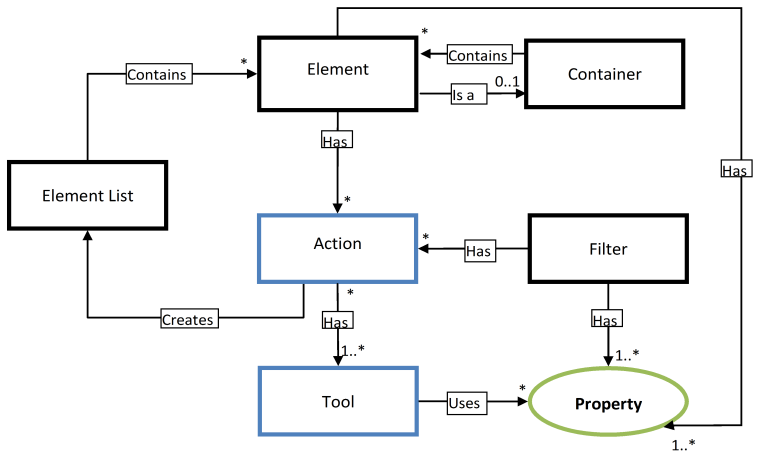Overview
AWM uses the following general expressions to describe the tool integration as flexibly as possible:
| Expression | Description |
|---|---|
| Element | An Element usually describes an object that is managed in the tool that is to be integrated in the AWM model. A file or a
database record is usually connected to it, and there are tools processing the elements.
Example: COBOL program TEST4711 Project: PRJ4711 |
| Element list | An element list is a list of elements with defined properties that is drawn up according to specific criteria. An element list is presented in the form of a table. The structure of the table can be a flat table or a tree table. |
| Container | A Container is a specific element which contains or references other elements, directly or indirectly. Containers can also
include other containers. The Container structure is presented in the form of a tree view.
Example: PDS file: USER01.TEST.COBOL (contains PDS members) Project: PRJ4711 (contains applications) Order: CHG4711 (contains sources connected to this change record) Container is only a logical concept in AWM. It has no physical representation in the AWM data model. |
| Filter | A Filter describes criteria from which a list of elements can be derived.
Example: All PDS members in USER01.TEST.COBOL, whose names begin with TEST. |
| Action | An Action is an integrally closed function that can be triggered in the user interface, for example, a function in the context
menu of an element. An Action can be made up of several working steps (tools), for example, an input dialog box, several tools
processing the input data, and an output dialog dox.
Example: Compile (in the context menu for Element TEST4711) |
| Tool | A tool is the smallest processing step that can be described in the AWM model, and generally processes inputs and creates
outputs.
Example: The REX1234 procedure for executing a Compile The input dialog to enter compile parameters. |
| Property | Properties are the characteristics of objects. Properties occur with different meanings, for example, as the property of an element, as filter criterion, as the input or output parameter of a tool, as the input or output field in a dialog box. |
| Resource | A Resource is an object that can be selected in the application user interface, that usually has properties, and on which actions can be carried out. Resources in the sense of this definition are, for example, elements, containers, and filters. |
| Function Package | Bundle of specific functions which can be used within a model. Function packages can also be defined by third-party developers,
effectively extending modeling capabilities and functions.
Examples:
|
A complete Eclipse-based user interface for the integration of tools can be described with the help of the AWM model editor and the expressions defined above.
Example
Several Elements can be identified in an SCM system. Elements can either represent the files managed by the SCM system or Containers in which the files are structured, such as projects, stages, and folders.
All elements have Properties. A property is an attribute of a type and is assigned a value at run time, for example, file name.
Tools, on the other hand, use properties as input parameters and assign properties to their output parameters. Tools are components of Actions to which elements can be assigned. Examples include Check-out, Edit, Compile, Delete.
A Delete tool, for example, requires the file name of the file to be deleted as an input parameter. The file exists as an Element, and has the property “File name”. The tool is modeled in the AWM model so that it uses the “File name” property as an input parameter. Used on an element, its file name is transferred to the tool, and the file is deleted.
You can define the elements that you would currently like to work with, using Filter at run time. The criteria by which elements can be searched can be entered in the filter dialog. The corresponding elements can be returned via an action. Returned elements are managed in element lists.
All the object types are shown below:
